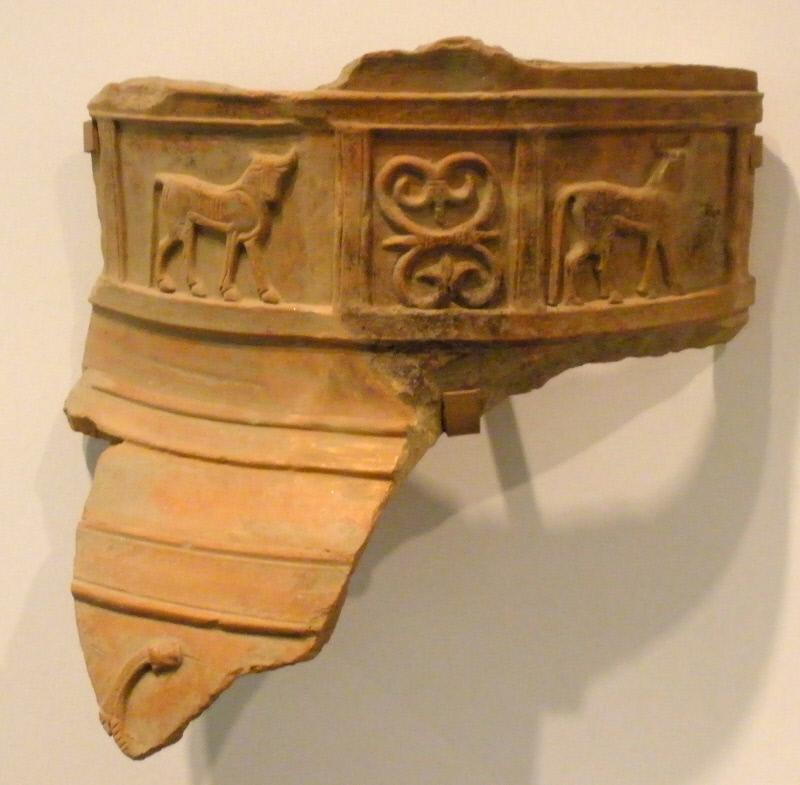
Storage Jar (Pithos) Fragments Depicting Bull
Five rejoined fragments form the neck, shoulder, and a small portion of the body decoration of a large storage jar (pithos). Two mold-made bulls flank mirrored heart-shaped lotus buds in the rectangular shaped spaces called metopes. Each bull has some internal details, such as the ribs, indicated with incised lines. Moving to the right, the animal lifts his head and looks frontally. The strong similarities between the two figures suggest that they were produced using the same mold, which has also been identified on other vessels (including a pithos rim fragment now at the Getty Villa).
The mold, as well as the clay composition and style of the piece, connects the pithos to the so-called workshop of Afrati. Afrati was an ancient site in eastern Crete that was probably a production center for relief pithoi (the plural of pithos). The site was looted in 1964 and many of the pieces that entered the market after this time come from Afrati. This piece, dated stylistically, was probably produced between 640–610 BCE. Another fragmentary pithos in the Menil Collection, 1970-057 DJ, most likely also comes from Afrati and was produced in the same period. Both vases would likely have been over three feet tall originally and featured relief decoration separated into bands, known as registers. Such pithoi were used as votive offerings, storage jars, and burial vessels.

